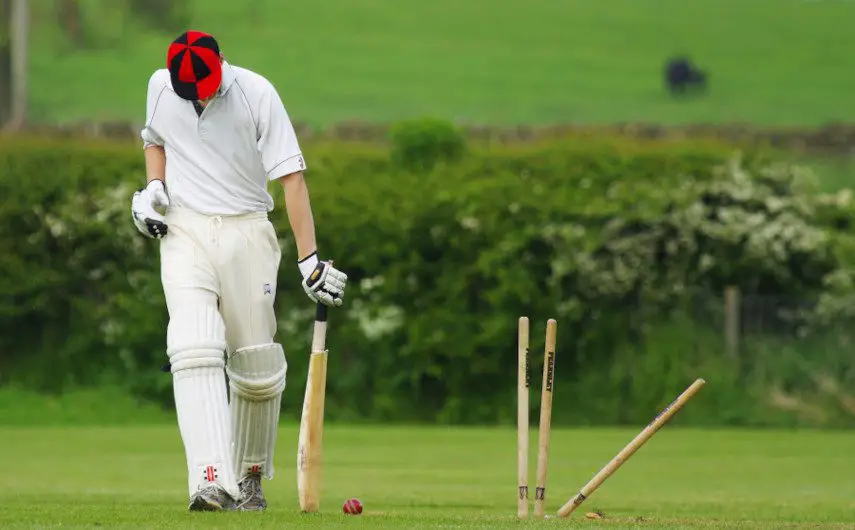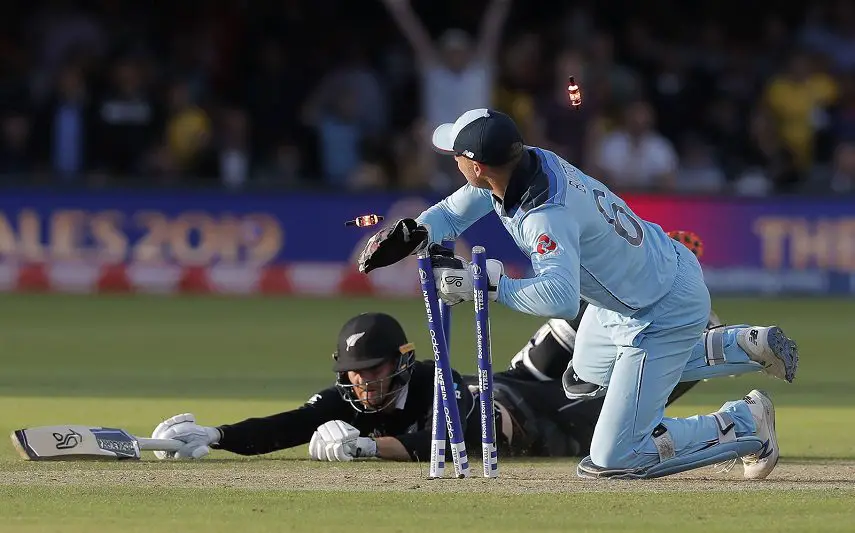Table of Contents
It’s become one of the most important pieces of technology in cricket but what, exactly, is Hawk-Eye and how does it work?
What is Hawk-Eye in Cricket?
Hawk-Eye is a piece of cricket ball tracking technology which measures the flight of a cricket ball. The way in which it operates then allows the game’s officials to understand where the ball has pitched and what its onward trajectory would have been.
With the technology in place, the third umpire can use Hawk-Eye to make confident decisions regarding LBW appeals.
The Hawk-Eye Technology
The objective of Hawk-Eye is to tell the umpire specific things about the path of the ball. If the officials are assessing an LBW decision they will need ball tracking to tell them three things:
- Where the ball has pitched
- Where the ball has struck the batsman
- Would that ball have been going on to hit the stumps
![]()
How Does Ball Tracking Work in Cricket?
In order to make these judgements, Hawk-Eye employs a number of video cameras around the field of play. In cricket, there are usually six of those cameras in operation. A store of data relating to the field of play and its dimensions is already in place before the game starts.
As the cricket match progresses, video feeds of the action are relayed to the Hawk-Eye system in real time. All of the footage that is produced is fed into a computer which then provides a 3D image of the cricket ball and its trajectory from the point it leaves the bowler’s hand.
The succession of image frames tracks the path of the ball and it will be able to take that information to predict its future trajectory. Will it be going on to hit the stumps or has it passed through without obstruction on its way to the wicket keeper?
It can be very complicated and technical in the way that it digests that information and looks ahead to where the ball will have travelled. However, the theory behind Hawk-Eye is quite simple as it uses the path of the ball that is known to the cameras before looking ahead to where it would have travelled.
How Accurate is Ball Tracking in Cricket?
Hawk-Eye is used in a number of sports and it’s widely known to not be completely accurate. There is a 3.6 millimeter margin of error when it comes to tracking the accuracy of a ball and where it lands, together with its onward trajectory.
That margin applies to all sports including cricket so, while the ball tracking technology is not 100% accurate, it comes very close and is considered acceptable by cricket’s governing bodies, as it’s a tiny margin compared to the overall measurements involved.
There is, as we will see shortly, a theory that the 3.6 mm projection isn’t entirely correct. In some cases, there have been referrals on the field of play that suggest a higher rate of deviation. However, the official figure is put down at 3.6 mm and that’s what the umpires are working with.
Advantages of Hawk-Eye

The advantages of Hawk-Eye are obvious ones, and they are crucial to the Decision Review System (DRS). If an on-field decision has been reviewed, the third umpire relies heavily on Hawk-Eye to provide the key information which I’ve listed above.
Without this type of technology, we would have to go back to the time when teams relied solely upon on-field decisions. Top level umpires will get most decisions right but the Hawk-Eye technology will always be more reliable than the naked eye.
If the game is going to have a referral system, Hawk-Eye is currently essential to that process and it’s the best option that cricket and other sports have.
Think of the processes that an umpire needs to go through before they make an LBW decision. Firstly, where has the ball pitched?
We know from our understanding of the LBW law that a batsman cannot be given out if the ball has pitched outside leg stump. How accurate would an umpire be on marginal calls where the ball appears to land close to, or on that leg stump line?
The same principle applies to another important decision that the umpire has to make. Where has the ball hit the batsman? The important law here states that a batter cannot be given out LBW if the ball strikes them outside the line of off stump and they are playing a shot.
Once again, it’s impossible to make that call with 100% certainty via the naked eye.
An umpire then has to judge the bounce which is, perhaps, the most difficult call of all. The surface and the condition of the ball are among the many points that need to be considered when judging bounce.
As we are about to see, there may be some criticism of Hawk-Eye and the way in which it operates but the advantages certainly seem to outweigh any potential downsides.
Criticism of Hawk-Eye
The criticism that Hawk-Eye has received can all be traced back to that margin of error. While 3.6 mm may seem like an insignificant amount, there are those who feel that it should be better and that the current technology is not accurate enough to be used in a game situation.
There is also a theory that current ball tracking is prone to even greater errors and there have been a number of incidents that underline this. At the start of 2022, South Africa’s Dean Elgar successfully reviewed an LBW decision against India when Hawk-Eye showed the ball to be bouncing some way over the stumps.
Indian players seemed shocked by the decision and it’s also claimed that umpire Marais Erasmus said ‘that is impossible’ when the footage was shown.
The incident was just one of a number of issues experienced with technology and it led to India’s captain Virat Kohli making his feelings known to the stump microphone.
To the naked eye, Hawk-Eye seemed to have got that one wrong. It was a notable instance but there have been others over the years. The criticism will prevail in certain quarters but those occurrences are rare. In general, the ball tracking technology that is currently used is reliable but Hawk-Eye is not without its faults.
Has Hawk-Eye Been Good for Cricket?
There will always be a theory that cricket was better before technology became involved. Some will say that we should just let the umpires get on with it and that human error should be part of the sport.
I don’t personally agree with that assessment and we should make decisions as foolproof as possible. If you’ve watched cricket to any great extent then you’ll know that umpires get most decisions right. They still need to be highly skilled and not everybody has the qualities to go on and officiate at the highest level.
Hawk-Eye and the Decision Review System are only there for marginal calls which are hard to see with the naked eye. I personally believe there could be some improvements in the review rules, and I really don’t like that teams have been allowed to review wides and no balls in the IPL. It’s my opinion that this just wastes time and those that take the review are often aware of that.
Coming back to Hawk-Eye, it has its faults, but it’s been a great introduction and it’s the best system we have right now.


